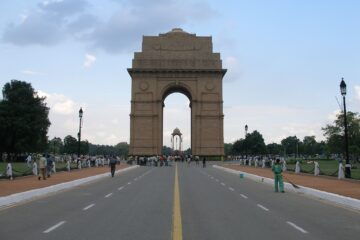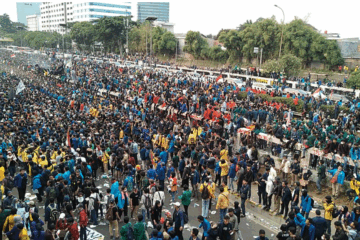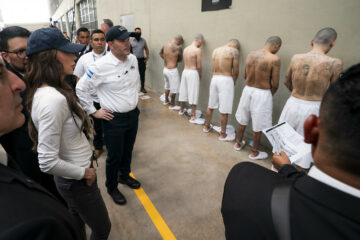
Victims of Climate Change
According to the World Health Organization, approximately eighty percent of the injuries, illnesses, and deaths resulting from climate change are in children. This stems from the increased presence of extreme weather events resulting from human-induced climate change such as droughts, floods, storms, and heatwaves that children are significantly more vulnerable too. These events directly affect people across the globe but it is the most blameless and innocent members of our communities who will suffer the greatest. For the first time in human history, we are in a state of climate emergency, requiring us to defend first and foremost those on the front line who are likely to suffer most from the effects of climate change: children.
Impacts on the Health of Children
Not only are children the largest group of people to be affected by climate change, but they are also more susceptible to its harmful effects than adults. Due to their dynamic development physiology and immature immune and and physiological defense systems, children are especially vulnerable and stand to be heavily impacted by the physical and psychological trauma associated with climate change. The PTSD, anxiety, depression, and sleep disorders that stem from frequent exposure to extreme weather events are most evident in young children. They are also highly susceptible to a myriad of other consequences of climate change: malnutrition, infectious disease, heat stress, respiratory disease, reproductive and developmental disorders, and cancer associated with a number of air pollutants. Further, The leading causes of death among children – diarrhoeal diseases and malaria – have become significantly more prominent. These numbers are expected to increase globally over time and in the next decade there are a projected 175 million children who will be negatively impacted by climate change.
The Injustice Behind Climate Change
As children and young people currently make up approximately thirty percent of the world population, we witness over two billion lives bearing the weight of a great injustice. In addition to being the largest group of people to be affected by climate change they are also the least to blame. The emissions of greenhouse gases into the atmosphere have been consistently and directly linked to the environmentally harmful production processes, such as the burning of fossil fuels, of large corporations and governments who promote and subsidize them. However, it is not those who gain economically from these actions who have to pay for the consequences. According to environmental health scientist, Frederica Perrera, “Climate change and its major source, the burning of fossil fuels, have already inflicted disproportionate suffering on children and are seriously endangering their future health and well-being.”⁸
As of now, over two billion children are growing up taking on the effects of climate change. Allowing this to occur is a violation of a child’s right to a decent living environment, the right to attend school, have good health and nutritious food, and grow up in safety, as set out in the United Nations Convention on the Rights of the Child (UNCRC). These rights were agreed upon by 196 countries in the UNCRC over 30 years ago yet children continue to suffer at an increasing rate. Since the ratification of the treaty, many powerful member nations have increased their carbon dioxide emissions by billions of tons. The inaction of these governments to combat one of the most eminent threats to the well-being of children globally is not only a breach of the CRC but it is morally reprehensible.
Most At-Risk
Those who are most at risk are minority group children in low-income areas, especially those in developing countries. Factors such as political turmoil and lack of resources and infrastructure contribute to the lack of effective disaster relief in these nations. Today, over 500 million children live in extremely high flood occurrence zones and approximately 160 million live in high drought severity zones. These zones will expand and affect more and more children as the climate continues to change and governments, corporations, and organizations do not act accordingly by working toward effective disaster risk reduction and disaster relief.
It is too often that these children are forgotten and it is therefore essential for all people to recognize that climate change is not a far-off affair. Although addressing this may serve as a first step toward a solution, it is clear that the problem is systemic and out of the control of the average person. There is a need for change at the governmental level to reduce and limit emissions, especially in developed countries where they are highest, and a need to hold those who have most contributed to climate change accountable. From there, we may stand a chance of preventing the further loss of life and well-being of children across the globe.
Edited by Ghayas Osseiran
1. Marie-Claude Martin, “Preface”, in Children on the Front Line, edited by Chris Brazier (N.p.: UNICEF, 2014), vii.
2. Frederica Perrera, “Children suffer most from climate change and burning of fossil fuels”, in Children on the Front Line, edited by Chris Brazier (N.p.: UNICEF, 2014), 15.
3. David Wood, “Effect of Child and Family Poverty on Child Health in the United States,” Pediatrics: Office Journal of the American Academy of Pediatrics 112, no. 3 (2003): 707-711, https://pediatrics.aappublications.org/content/112/Supplement_3/707.short.
4. David Wood, “Effect of Child and Family Poverty on Child Health in the United States”.
5. Kristie L. Ebi, “Childhood health risks of climate change,” in Children on the Front Line, edited by Chris Brazier (N.p.: UNICEF, 2014), 22-23.
6. Alex Harris, “10 facts you need to know about children and climate change”, Plan International UK, 5 June 2017, https://plan-uk.org/blogs/10-facts-you-need-to-know-about-children-and-climate-change.
7. Marie-Claude Martin, “Preface”, in Children on the Front Line.
8. Frederica Perrera, “Children suffer most from climate change and burning of fossil fuels”.
9. Joy Guillemot and Jazmin Burgess, “Child rights and risk”, in Children on the Front Line, edited by Chris Brazier (N.p.: UNICEF, 2014), 47-48.
10. “Convention on the rights of the child,” United Nations, Accessed 16 February 2020, https://treaties.un.org/Pages/ViewDetails.aspx?src=TREATY&mtdsg_no=IV-11&chapter=4&clang=_en.
11. Hannah Ritchie and Max Roser, “CO₂ and greenhouse gas emissions,” Our World in Data, May 2017, https://ourworldindata.org/co2-and-other-greenhouse-gas-emissions#citation.
12. Frederica Perrera, “Children suffer most from climate change and burning of fossil fuels”
13. “Unless we act now: the impact of climate change on children”, UNICEF, Accessed 15 February, 2020, https://sustainabledevelopment.un.org/content/documents/2161unicef.pdf.




